About District
The name of Bidar appears to be derived from ‘bidiru’ which means bamboo. The place seems to have been known for bamboo clusters in the past, came to be known as ‘Bidaroor’ and then ‘Bidare’, ‘Bidar’. Though there are other versions of origin, the name ‘Bidarooru’ seems to be more near one and authenticated by contemporary literary works. Bidar is a hill-top city situated on the deccan plateau, in the north-eastern part of Karnataka state in India. It is the headquarters of the Bidar District.
Being located at the farthest of around 700 km (430 mi) from the state capital Bengaluru, it has been neglected by the state government for a long time. However, owing to its rich heritage, the city has a prominent place in the Archaeological Map of India. Picturesquely perched on the Deccan plateau, the Bidar fort is more than 500 years old and still standing strong. According to the book “Bidar Heritage” published by the state Department of Archaeology, Museums and Heritage, of the 61 monuments listed by the department, about 30 are tombs located in and around Bidar city. This explains the nickname – The City of Whispering Monuments. The heritage sites in and around Bidar have become the major attraction for film shooting in recent years with Bollywood making visits apart from kannada film industry
Bidar is home for the second biggest Indian Air Force training centre in the country. The IAF Station Bidar is used for advanced jet training of prospective fighter pilots on BAe Hawk aircraft.
Bidar city is known for its Bidri handicraft products, and its rich history. Bidar is also considered one of the holiest place for Sikh pilgrimage. Unlike other places in the region, Bidar is the coldest and wettest place in north Karnataka. For the year 2009-10, Bidar was ranked 22nd among the cleanest cities in India, and 5th cleanest in Karnataka. SH4 passes through Bidar and the whole city is integrated with 4 lane road.
Ancient Karez System in the city have been recently discovered. The Karez (Qanat) is an underground network of aqueducts for water supply. The Bidar Karez, built in the 15th century, is more than 3 km (1.9 mi) long with 21 air vents. Underground canals, built to connect underground water streams, were meant to provide drinking water to civilian settlements and the garrison inside the Bidar fort. This was necessary in a city where the soil was rocky and drilling wells was difficult.
History of Bidar Fort
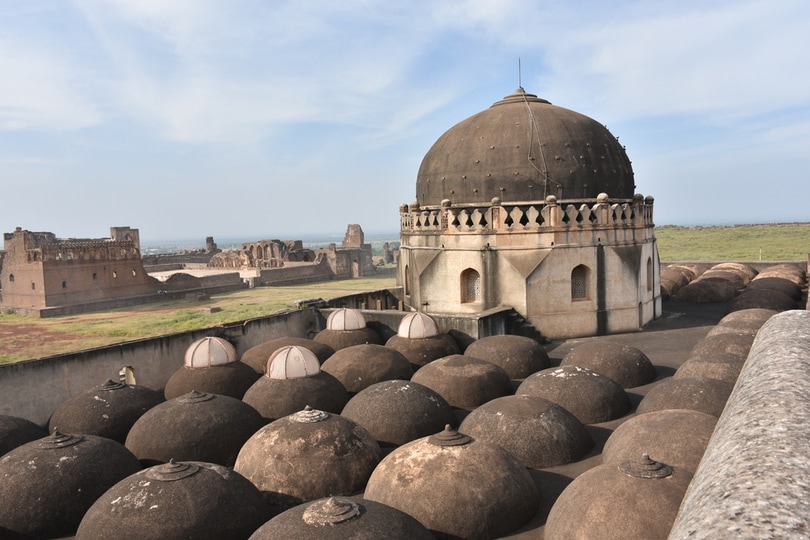
The Bidar Fort was originally constructed in the 8th century and later reconstructed in 1428 AD. The Bidar Fort was said to be a small fort in 1322. The first documented history of Bidar Fort dates back to the Delhi Sultanate era. The Muslims had invaded the region and Prince Ulugh Khan had captured the fort. It was followed by the Tughlaq dynasty under the control of Muhammad Bin Tughlaq in the 14th century. In 1347, Hassan Gangu, the governor of the Sultanate led a successful revolt and established an independent dynasty of Bahmani Sultanate in the Deccan. The aftermath of the revolt was the flourishing and growth of the city of Bidar. Hassan Gangu changed his name to Ala-ud-din Bahaman Shah, establishing a new family name. Gulbarga was the original capital of the state before it was shifted to Bidar in 1429 under the rule of Sultan Ahmad Shah – I. The Bidar fort was renewed and renovated by him. He added brilliant fortifications, bastions, big gates, palaces, baths, kitchens, gardens, pavilions, and mosques.
The Bidar Fort has stood witness to a lot of historical milestones – the rise and fall of Bahmani dynasty, rise and separation of the five Deccan Sultans, capture by the Barid Shahi and Adil Shahi dynasties, and finally being won by the Mughal emperor Aurangzeb in the blockade of Bidar in 1657. The Bidar Fort, however, went back to the Nizam for a short period in the 1700s. After the British colonized India, it was under their control. Post-independence, it came back to the state of Karnataka.
Architecture
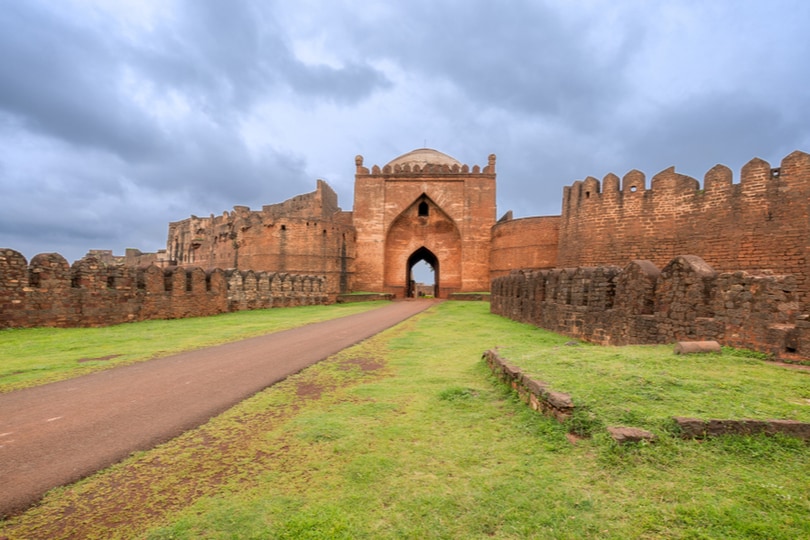
The Bidar Fort has hints of Islamic and Persian architecture in the nooks and corner of the monument. When Ahmad Shah renovated the old fortress of Bidar, he built an entire royal complex inside the ten-kilometer perimeter of the walls. The security inside the Bidar Fort was foolproof which is evident through the glacis, triple-layered moat, and the thick red laterite stone walls. It even withstood the Mughal attack by Aurangzeb until they started shooting the fire rockets.
There are thirty-seven massive octagonal bastions in the Bidar Fort which have metal-welded cannons used to fire at the enemy. The largest bastion among them is the Munda Burj. The parapets are tunneled with openings that are meant for firing. There are seven big arching gateways in the fort; the Mandu Darwaza being the first one, followed by intermediary Sharza Darwaza named after the lions carved onto it, signifying the empire’s strength, and finally the Gumbad Darwaza with the ethnic Persian architecture leading into the main complex. The structure of the entire Bidar Fort is a reminder of Indian history and the rich past of the country’s monuments.
One of the unique features of the Bidar Fort is the historic water supply called karez which is a water harnessing technology originated in Persia. The technology was brought to the Deccan by the Brahmani kings in the 15th century. The Brahmani kings built the karez system in Naubad village in Bidar, Gulbarga and Bijapur districts in Karnataka, and also Burhanpur district in Madhya Pradesh.
The karez system is a network of underground canals, connected by vertical shafts to the surface. It taps into groundwater or natural springs and transports it through the tunnel to the settlement. The water ends up on the surface canal, emptying into the pools in the village for various uses like drinking, washing clothes, watering livestock, agricultural uses, etc.
Bidar has rocky soil which makes access to water very difficult. Karez helped in providing drinking water to civilian settlements. The system has twenty-one vertical shafts and extends up to two kilometers. There are only seventeen visible karez shafts today as they have all been closed by builders and developers.
Structures Inside the Bidar Fort
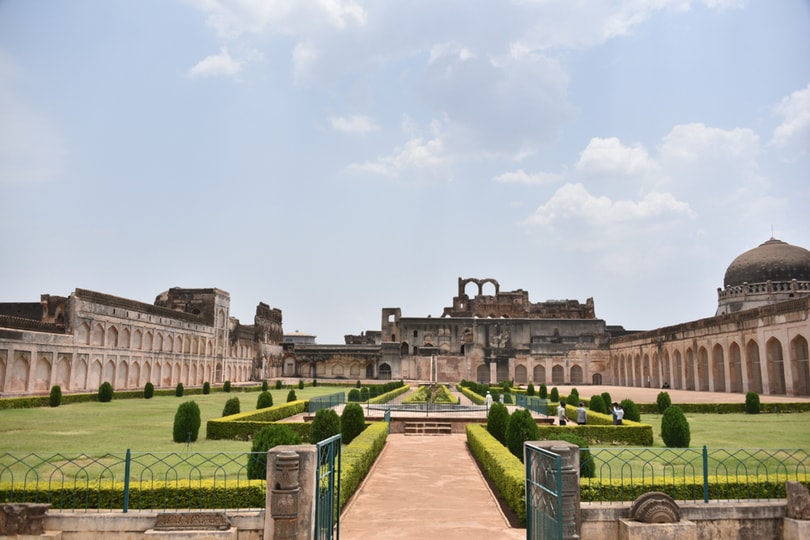
Rangeen Mahal
In the fort, the complex stands with the colorful Rangeen Mahal palace, built by Muhammad Shah in the early 16th century. It is made with ornate tiles of vivid and bright colors. It was constructed for the primary use of safety for the royalty, and also used for summer escapades concluded by the presence of tanks, baths, and underground rooms. Ali Barid later decorated the palace with pearl engravings on black granite and wood. Behind this grand structure stands a museum where one can take a walk down history gazing at the various artifacts of the olden times.
Solah Khamba Mosque
Next comes a masterpiece built by Qubil Sultani in 1423 AD to 1424 AD with a central dome above long arches and sixteen pillars of its prayer chamber. It has been said that Aurangzeb used to pray here on his visits to the Deccan. Visitors aren’t allowed inside the mosque. The building stands along with Lal Baug which is a spectacular sight to see.
The Mahals
The Tarkash Mahal was built for the Turkish wife of a Bahmani sultan of Bidar in the 14th-15th century. The Gagan Mahal, on the other hand, is known for its security and beauty. It used to be a residential complex for royalties. Some say that women used to witness animal fights here. The archaeological museum is a must-visit for its collection of royal possessions. The Takht Mahal is a throne room. It has witnessed the coronation of many Brahmani and Barid Shah rulers over the period.
Diwan-i-Am and Diwan-i-Khas
It is a common notion that these names are associated with the Mughal rulers. The fort had a high walled audience hall constructed near the mosque. Diwan-i-Am is used as a public hearing court. It has intricate trellis work on it, giving it the name Jali Mahal.
Timings of Bidar Fort
Bidar Fort is kept open for the audience every day of the week. The gates for Bidar Fort are open from 8:00 in the morning to 6:30 in the evening. The visiting duration of the fort is one to two hours.
Entry fee for Bidar Fort
Bidar Fort has no entry fee for Indians and foreigners both. There is no extra fee for cameras and mobile phones as well.
Best Time to Visit
According to the visitors, the best time to visit Bidar Fort is between October and March as the weather remains pretty pleasant over there.
Places to Visit Nearby
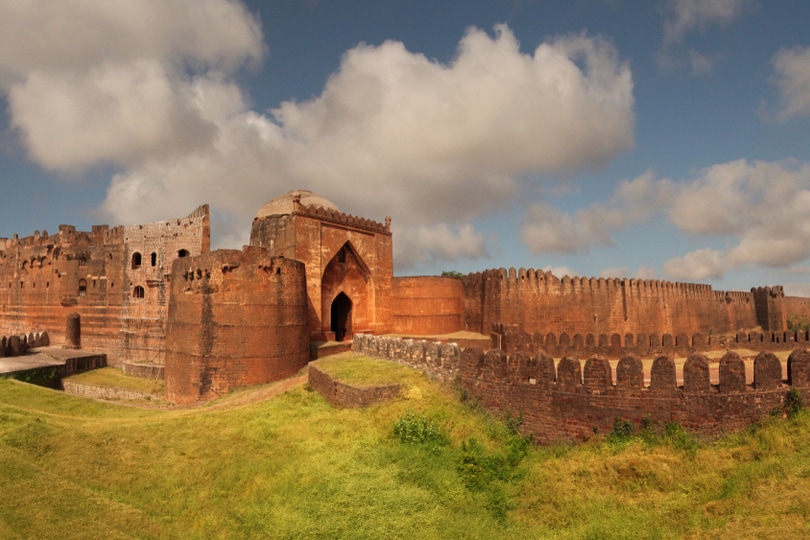
If you are done exploring the Bidar Fort but you aren’t satisfied, fret not. There are other attractions nearby to keep the explorer in you content:
Papnash Shiva Temple
Papnash Shiva Temple is a temple that holds religious significance. It is believed that the Shivlinga here was set down and the temple installed by Lord Rama. People visit this place during the festive season of Shivratri. There is a spring in front of the temple which flows into a pond named “Papnash”. It is said that the water from the pond washes away the devotee’s sins and cleanses their soul. The Papnash Shiva Temple is one of the oldest and one of the most important temples in the country.
Guru Nanak Jhira
Guru Nanak Dev Ji was on his second missionary tour of South India when he reached Bidar. He visited Nanak Jhira in one of his visits. During his stay, Guru Nanak was moved by the condition of the people there as they were suffering through a shortage of water. The Guru then touched the hillside with a prayer in mind and mercy in his heart. To everyone’s surprise, a clear and sweet tasting fountain gushed out of it. A gurdwara was built at that spot. Around four to five lakh people visit Guru Nanak Jhira every year with nearly thirty thousand people visiting it during the festival season.
How to Reach?
If you prefer traveling by air, you can catch a flight to Hyderabad airport and travel to Bidar by car or taxi. It is a 2 and a half-hour drive for the same.
Bidar Junction is connected to various cities. Most tourists prefer traveling from Hyderabad railway station to Bidar Junction.
If you want to have a quick road trip, Bidar has many state transport buses traveling via Hyderabad. You can take your vehicle too.
Bidar offers a lot to the wanderer. You can explore to your heart’s content and come back home with memories to last a lifetime.



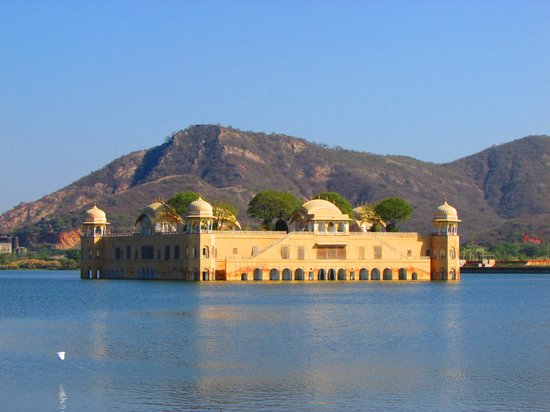
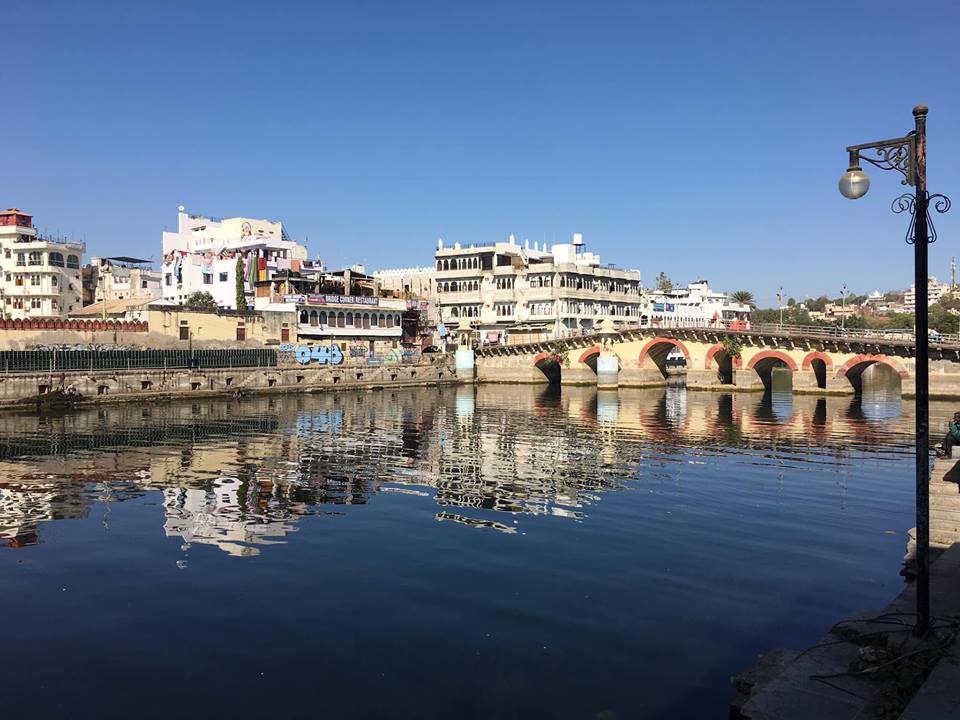
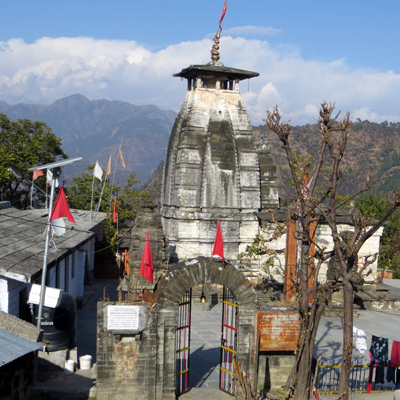

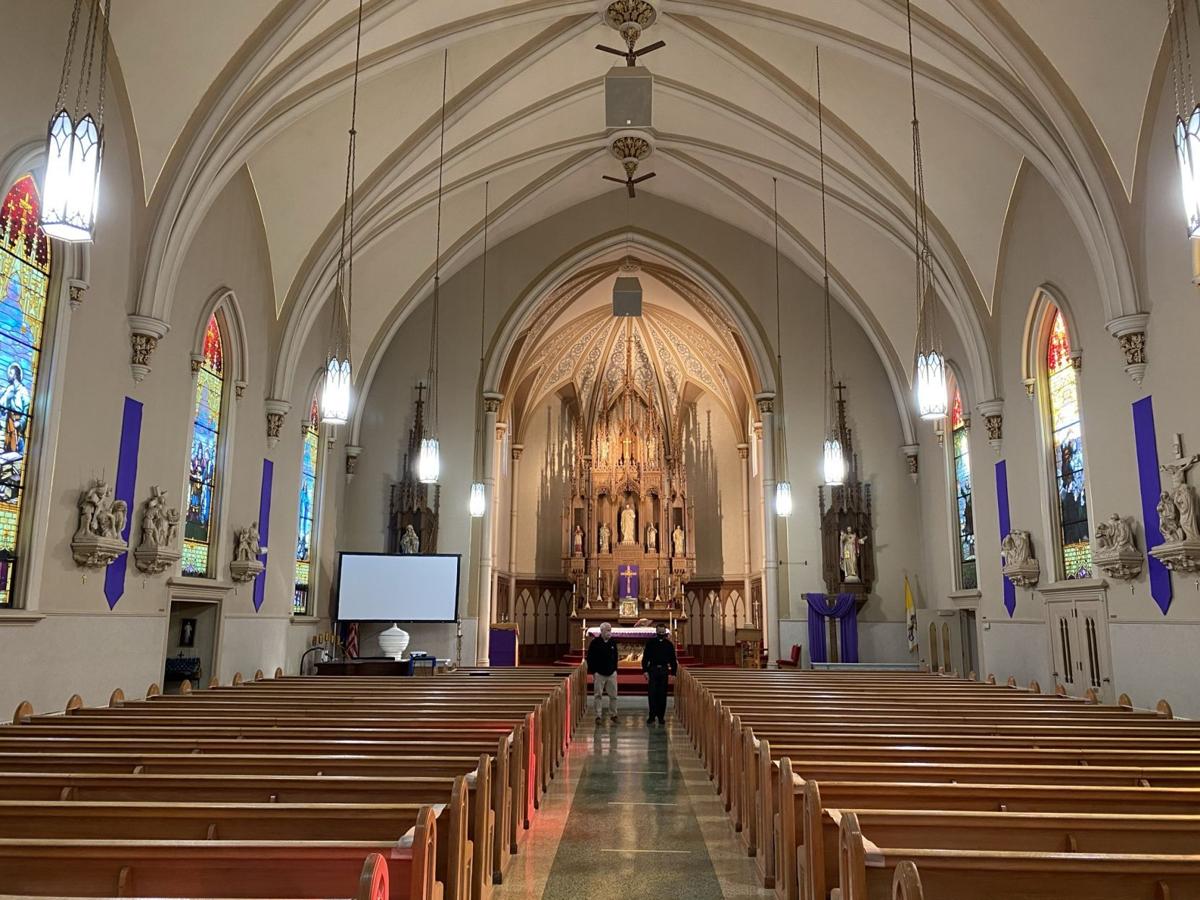

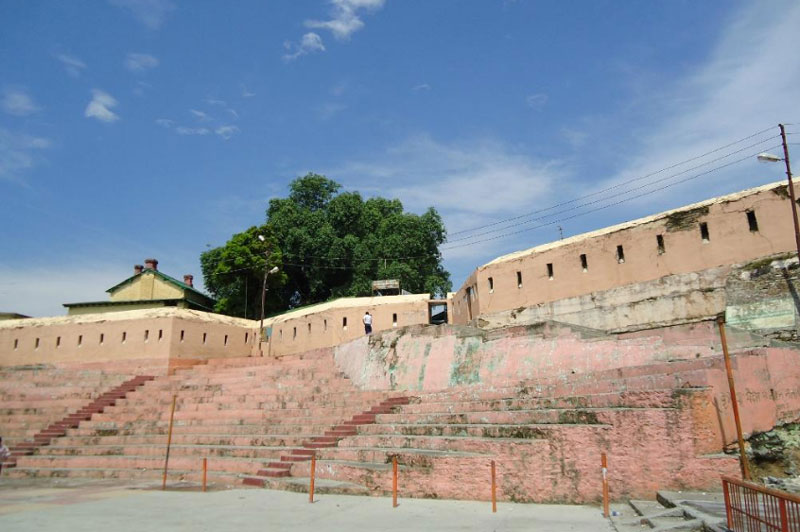



6 Comments
Comments are closed.